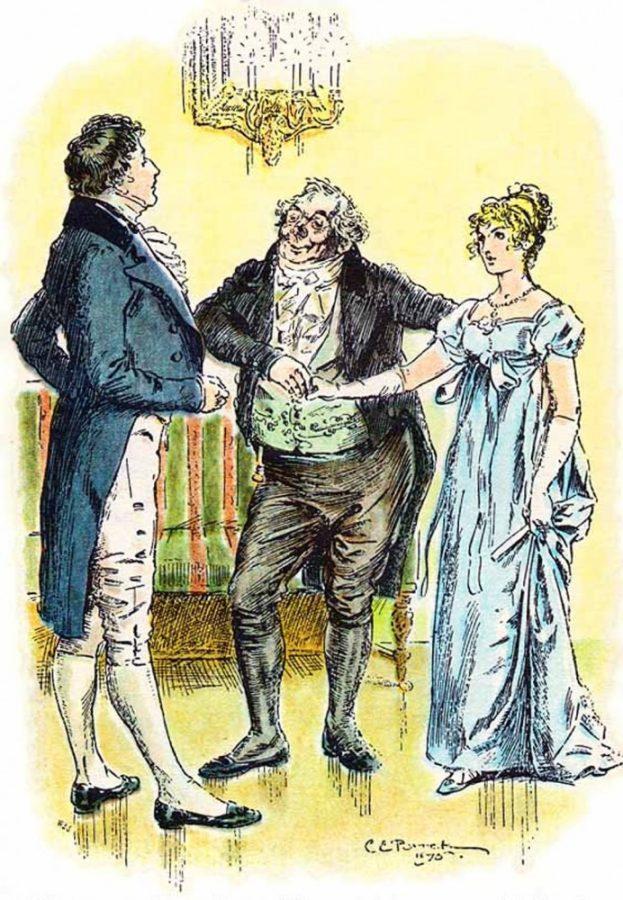New love stories are written every day, but when the matters of true love are discussed in literature, the classics still seem to hold the prize for most swoon-worthy leading men. Jane Austen’s “Pride and Prejudice” is 202 years old and still garners fans from around the world. Charlotte Brontë’s “Jane Eyre” epitomizes the innocent woman taming a jaded man and now gathers criticism for outdated overtones, while Nicholas Sparks’ “A Walk to Remember” took over bookstores and movie theaters alike.
Mr. Darcy of “Pride and Prejudice”
Mr. Darcy, the dullest hero in Austen’s canon, has jilted women’s expectation of love for centuries.
Darcy’s vocabulary includes “ardently,” “scruples” and “unalloyed inclination.” His firm grasp of the English language combined with his statuesque frame entice even Elizabeth Bennett. Women pretend they could refuse him, but are Austen fans likely to hesitate when an undeserving man like Darcy can put a thesaurus in submission?
Next time a man with grimy hair and wrinkled, Febreze’d clothing uses Darcy’s go-to words like “imprudence” or, God forbid, “henceforth,” ask yourself this: Did you catch your breath in awe of his supple presence or were you merely holding it because the stench of his Axe body spray was zapping your oxygen supply?
Mr. Rochester of “Jane Eyre”
Brontë’s “Jane Eyre” features the classic gothic romantic elements of the theologically sound girl, the man with a damaged soul and the bat-crazy wife hidden in an attic.
Mr. Rochester is a prime example of a rebel heart calmed by the sweet musings of the “poor, obscure, plain and little” heroine, Jane Eyre. He desired every bit of Jane, but he didn’t pursue her solely as another notch on his bedpost — and not just because his bed post had burned to a crisp.
Jane’s naivete wasn’t sought after in the same perverse way the “maidenhood” of a young woman is purchased the night before her life as a Geisha. Today, Jane refusing sexual intimacy with Rochester is viewed as repressed and anti-feminist.
However, if Jane had submitted to the married man’s efforts, would she be any better than a modern woman convincing herself that her married boyfriend’s wife “doesn’t treat him right”?
In the end, Jane’s resolve to run away from his tempting offer resulted in their lawfully binding marriage.
Landon Carter of “A Walk to Remember”
“A Walk to Remember” by Nicholas Sparks was published in 1999, but his contribution to the romance genre has altered expectations of love. Sparks’ tale of the naive bookworm Jamie Sullivan, secretly battling terminal leukemia, was the surest way to manipulate readers into overlooking her lack of fault and depth.
Sparks’ bad-boy-next-door transforming into Sullivan’s wise, devoted caregiver makes for an instant, though highly unlikely, hero.
Overlooking harsh realities of living with cancer, the literary community treats this disease as the choicest-of-all maladies.
If Sullivan were covered in boils, would her teen lover apply balm to her ravaged skin? Would he serenade her with lyrics about her permanent catheter bag or write sonnets about her agoraphobia? Romanticizing terminal or curable diseases overlooks the truest test of love. Can love survive when chronic illness washes away outer beauty and joy and robs a person of their future?
_______________
Follow Anna Mae Ludlum on Twitter.









